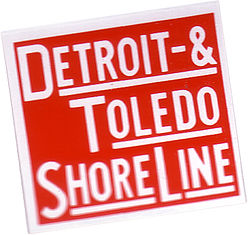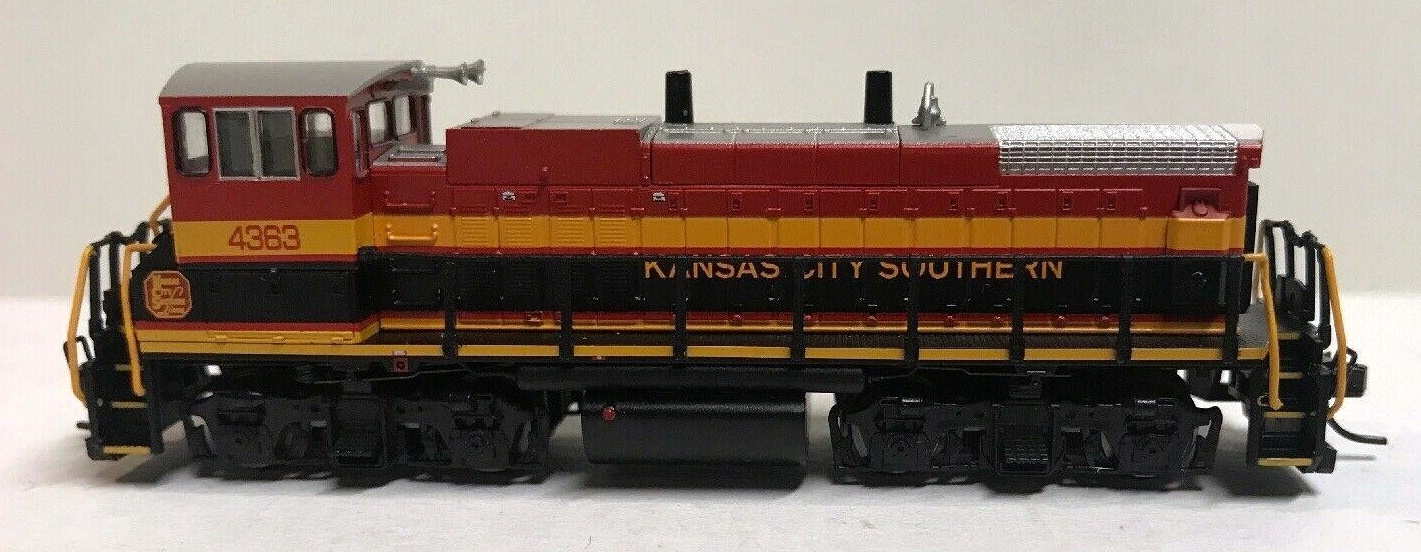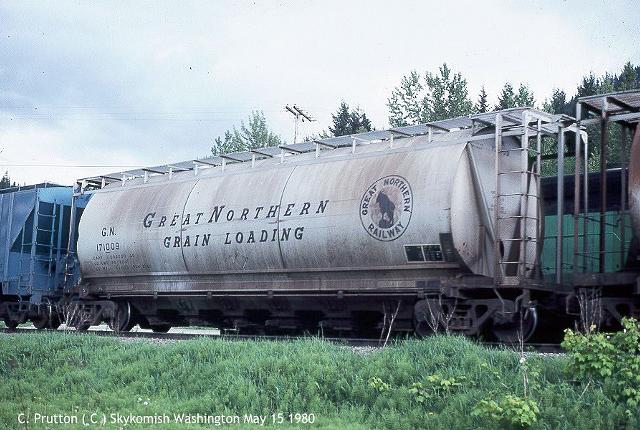Model Information: This model was developed by Delaware Valley Freight Car Corporation. The tooling was purchased by Bowser and has been re-released several times since it was acquired. The body style has also been sold by Eastern Seaboard Models under the ESM branding. The model is available in both 3-Bay and 6-Bay variations.
Prototype History: ACF introduced their roundish cylindrical hoppers in the early 1960s. The cars differed greatly from the ribbed sided hoppers of the era. They have been made in 3-bay and 6-bay variations. These cylindrical hoppers were superseded on ACF’s production line by the Centerflow in 1964, a revolutionary design that influenced later covered hopper types. In the late 60s or early 70s Canada came out with 4-bay covered hoppers that appear to be derived from ACF’s pre-Centerflow cylindrical hoppers. These cars were used by CN, CP and various smaller Canadian shippers. There is some question as to why the Canadian builder based their design off the older cylindrical and not ACF’s newer Centerflow. It was likely a patent issue and copying it could have triggered legal action against the Canadian builders. There are also certain structural design differences between the cylindrical and centerflow cars and perhaps the decision to copy the cylindrical was based on the greater volume capacity of the cylindrical design.
Road Name History: The D&TS was built just after the turn of the 20th Century, originally as a fast interurban line connecting Toledo with Detroit. With construction well underway (about 3/4 of the way to Detroit) and some of the trolley wire up, the backers started to run out of money and sold the line to Grand Trunk Western and The Clover Leaf Route, with each getting half. This would give GTW (which blanketed southern Michigan) a friendly connection to the rail hubs at Toledo. The Clover Leaf (officially the Toledo St. Louis & Western) got a friendly connection to Detroit. The trolley wire came down and the track was upgraded to GTW standards. From then on, Detroit & Toledo Shore Line was a multi-track 59 mile speedway for freight. Ironically for a line conceived as an interurban, the D&TS never offered passenger service. Later, they would adopt the motto, “Expressway for Industry.” In 1923, the Nickel Plate Road merged the Clover Leaf and took over their half of the D&TS.
In the steam era, about 30 locomotives were required to run the line. 2-8-2’s and 2-8-0’s handled the road traffic while USRA 0-8-0’s and some smaller switchers worked the yards. The D&TS dieselized in the early 50s with just three EMD models, SW7s and SW9s for switching and GP7s for road service. The 1953 batch of geeps was the last locomotives bought by the railroad! These were delivered in a yellow-over-blue paint scheme. The narrowly focused roster made the shop crews experts at getting the most from the fleet and keeping them running for the next three decades.
The crooked square logo is a nod to Grand Trunk Western while the black and yellow paint scheme adopted around 1959 is a nod to the Nickel Plate. In 1964, the Nickel Plate was merged into Norfolk & Western so they took the 50% stake in the D&TS. The Shore Line kept the Nickel Plate-esque paint scheme until the end however.
D&TS trains routinely ran north past Detroit and into Flint on GTW tracks, while GTW trains ran south all the way to the Toledo Terminal loop. After the 1964 N&W-Nickel Plate-Wabash merger, N&W had a better line west out of Detroit on the former Wabash rather than using the D&TS and the old Clover Leaf (which had been built on the cheap.) From then on, the D&TS became much more important to the GTW than to the N&W. In 1981, N&W finally sold their half to the Grand Trunk Western and the Detroit & Toledo Shore Line was merged into the GTW.
In the steam era, about 30 locomotives were required to run the line. 2-8-2’s and 2-8-0’s handled the road traffic while USRA 0-8-0’s and some smaller switchers worked the yards. The D&TS dieselized in the early 50s with just three EMD models, SW7s and SW9s for switching and GP7s for road service. The 1953 batch of geeps was the last locomotives bought by the railroad! These were delivered in a yellow-over-blue paint scheme. The narrowly focused roster made the shop crews experts at getting the most from the fleet and keeping them running for the next three decades.
The crooked square logo is a nod to Grand Trunk Western while the black and yellow paint scheme adopted around 1959 is a nod to the Nickel Plate. In 1964, the Nickel Plate was merged into Norfolk & Western so they took the 50% stake in the D&TS. The Shore Line kept the Nickel Plate-esque paint scheme until the end however.
D&TS trains routinely ran north past Detroit and into Flint on GTW tracks, while GTW trains ran south all the way to the Toledo Terminal loop. After the 1964 N&W-Nickel Plate-Wabash merger, N&W had a better line west out of Detroit on the former Wabash rather than using the D&TS and the old Clover Leaf (which had been built on the cheap.) From then on, the D&TS became much more important to the GTW than to the N&W. In 1981, N&W finally sold their half to the Grand Trunk Western and the Detroit & Toledo Shore Line was merged into the GTW.
Brand/Importer Information: On May 1, 1961, Bowser was purchased by Lewis and Shirlee English and moved from Redlands, CA to their basement in Muncy, PA. The original Bowser Manufacturing Co first advertised in the model railroad magazines in November 1948. At that time, the company had only one (HO Scale) engine, the Mountain, which had a cast brass boiler that is no longer available. It was sometime later that Bowser (Redlands) developed the NYC K-11 and the UP Challenger. The molds were made by K. Wenzlaff who introduced himself at the MRIA Show in Pasadena, CA in 1985 These two locomotives are still current production.
Bowser entered into N Scale in 1998 with their acquisition of the Delaware Valley Car Company, a manufacturer of N scale freight cars.
Bowser entered into N Scale in 1998 with their acquisition of the Delaware Valley Car Company, a manufacturer of N scale freight cars.
Item created by: Lethe on 2015-10-02 10:12:23. Last edited by CNW400 on 2020-05-25 15:14:22
If you see errors or missing data in this entry, please feel free to log in and edit it. Anyone with a Gmail account can log in instantly.
If you see errors or missing data in this entry, please feel free to log in and edit it. Anyone with a Gmail account can log in instantly.











